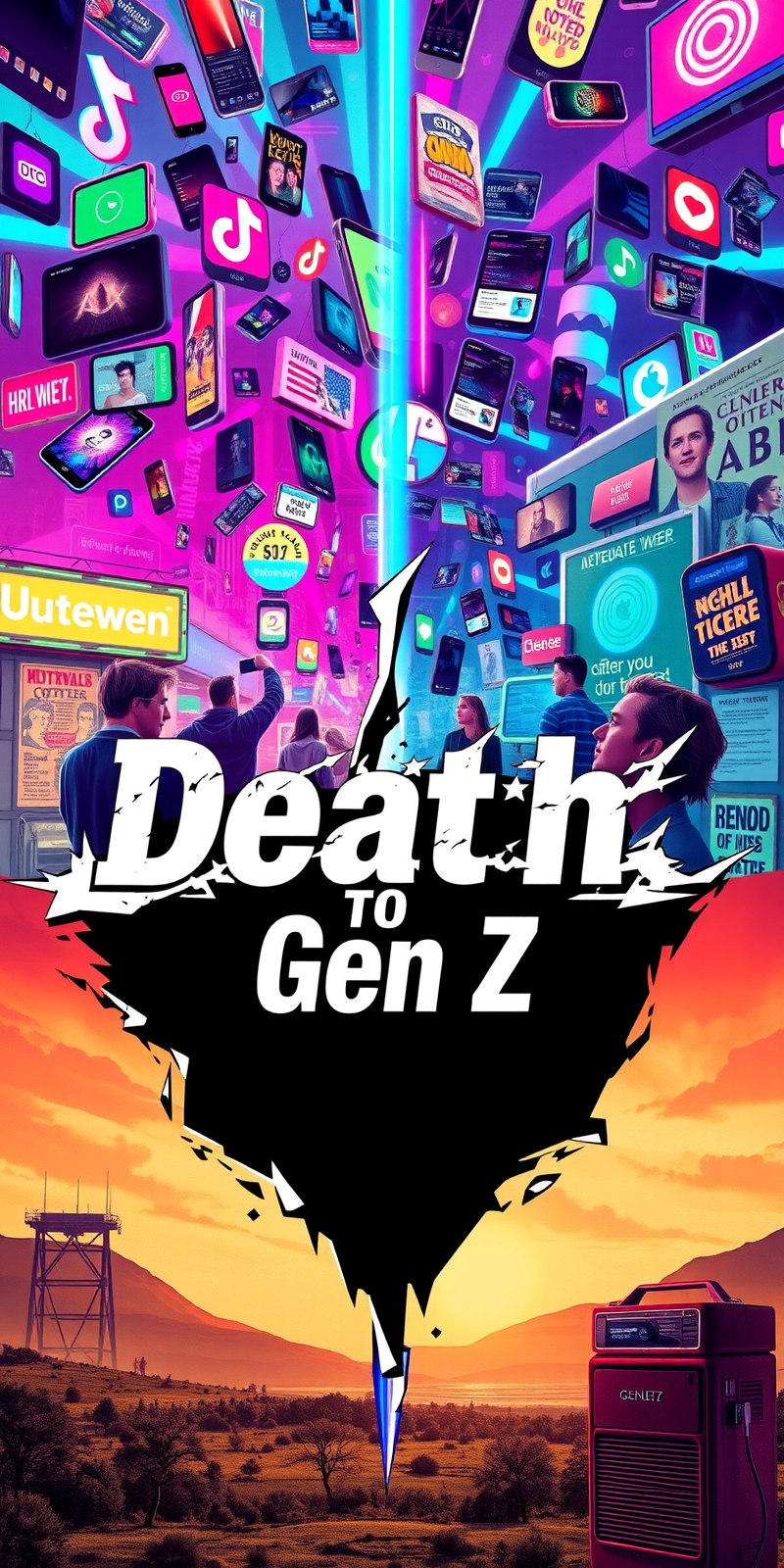Design Concept: Overall Theme: A dramatic, dystopian contrast between the perceived excesses of Gen Z and a nostalgic return to earlier, simpler times. Top Half (Gen Z): The upper part of the poster features a high-energy, chaotic visual style representing the Gen Z era. Use a palette of neon colors—vivid pinks, electric blues, and neon greens. Include realistic elements such as smartphones with multiple app icons (TikTok, Instagram), augmented reality (AR) glasses, and a digital world filled with viral memes and social media notifications. The background is a bustling digital cityscape with holographic advertisements, glitch effects, and chaotic patterns that evoke the sensory overload often associated with the fast-paced digital age. Bottom Half (Retro/Alternative): The lower section contrasts this with a nostalgic, subdued aesthetic. Use warmer, muted tones such as sepia, olive green, and soft browns. Feature realistic elements from earlier decades—classic vinyl records, vintage typewriters, and old-school film cameras. The backdrop can be a serene, retro-inspired landscape with a calm, almost idyllic setting reminiscent of the mid-20th century. Include subtle textures that evoke a sense of nostalgia, like faded posters or a vintage radio. Center Transition: Where the two halves meet, the title "Death to Gen Z" is displayed in a striking, bold font. The font itself can be split between the chaotic, digital style of Gen Z and a classic, retro font. The transition zone should blend elements from both sides, creating a dramatic contrast that visually represents the tension between the fast-paced digital era and a yearning for simpler times. Additional Elements: Graphics: Use sharp, aggressive lines and digital effects on the Gen Z side to evoke a sense of urgency or conflict. Textures: Incorporate grunge textures and glitch effects for Gen Z, while using soft, smooth textures for the retro side. Visual Metaphors: Consider including symbolic imagery, like a crumbling digital billboard merging into a vintage newspaper, to emphasize the thematic shift. This approach creates a thought-provoking visual narrative without being disrespectful, focusing on the tension between technological advancement and nostalgia for simpler times.
